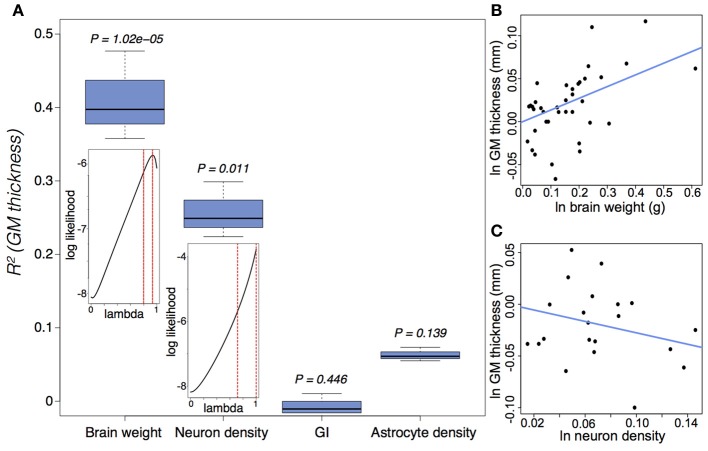Figure 6.
Gray matter (GM) thickness is a function of brain weight and neuron density. (A) Variation in GM thickness can be significantly explained by brain weight [F(2, 37) = 22.58, P = 3.9 × 10−7] and neuron density [F(2, 20) = 7.96, P = 0.003], but not by either GI [F(2, 38) = 0.066, P = 0.936] or astrocyte density [F(2, 20) = 2.37, P = 0.119]. The insets suggest a strong phylogenetic signal (Pagel, 1999), tantamount to a random walk, in the scaling of GM thickness as a function of brain weight (lambda = 0.89(+0.07)(−0.09)) and neuron density (lambda = 0.88(+0.12)(−0.17)). (B,C) Ln-transformed phylogenetically independent contrasts with regression through the origin for GM thickness as a function of (B) brain weight and (C) neuron density. GM thickness scales positively as a function of brain weight (e0.136 ± 0.027) and negatively as a function of neuron density (e−0.276 ± 0.098). Cell densities pertain to gray matter counts in the visual cortex from Lewitus et al. (2012). See (Lewitus et al., 2013) and Table A1 for neuroanatomical data.

